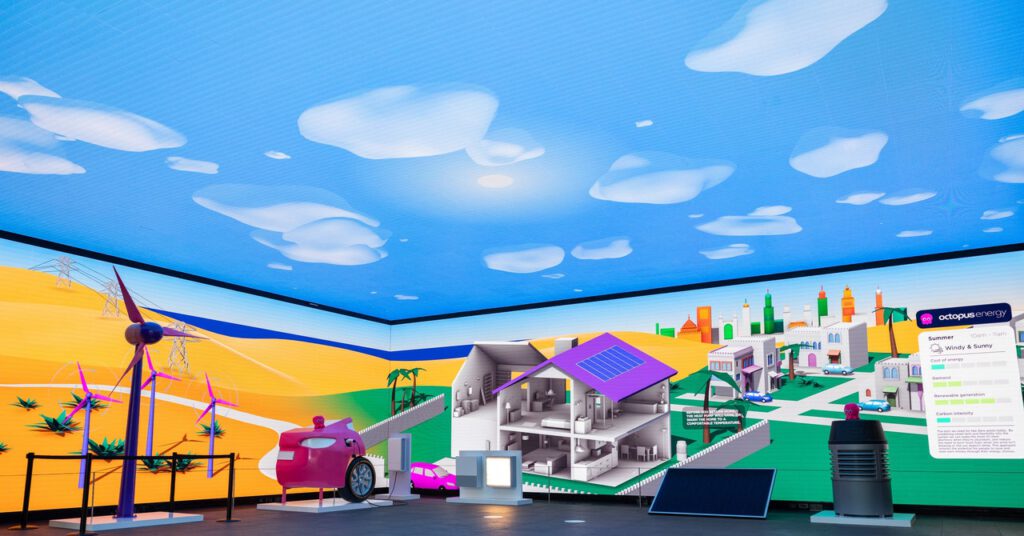John Bucknell, CEO of Virtus Solis
That pace would normally be unheard of in the energy sector, where bureaucracy gets in the way at every turn. But in space, there are no local councils and no government permission needed. “There are no regulations in space,” Bucknell says. “It’s like a lawless world.”
This freedom is what made the World Wide Web what it is today, its inventor and highly esteemed guest Tim Berners-Lee revealed at the summit. “Universality was very important, we had to make it universal,” Berners-Lee said, explaining that all you needed to upload was http://. “Because it was designed to be universal, it ended up being used for everything,” Berners-Lee said. “Almost.”
The same thing happened with the early Internet. Early Internet policy in the United States was that anyone could use or add to the Internet as long as they had equal access to it. [renewable energy] “When a revolution happens, you need similar rules,” said Octopus’ Jackson. In Jackson’s net-zero future, the energy grid is open, decentralized, and much more efficient. The Energy Tech Summit laid out a path to get there. If you missed it, you can watch all the talks here.
Tim Berners-Lee, inventor of the World Wide Web
Berners-Lee believes the energy system needs to be more resilient, and has proposed developing a kind of energy router that would allow a household to switch between different energy suppliers.
Jerome Foster II, Co-Founder of Waic Up
Foster, a member of the White House Environmental Justice Advisory Council, encouraged energy industry leaders to hire young consumers as consultants, rather than simply selling them to advertising campaigns.
Pavlos Holman, Managing Partner at Deep Future
Holman surprised many people at the summit, but one of the most surprising revelations was that solar panels in space can generate eight times as much energy as solar panels on Earth. Great news for us, not so good news for the battery industry, because this solar energy doesn’t need to be stored because it can be sent directly to where it’s needed.
Deborah Meaden, Business Leader
Dragons’ Den investor Meaden led a discussion on how a global energy revolution will be bigger than the internet, and her final thought was, “We can do this. Humanity is amazing. The question is, ‘Do we have the will to do it fast enough?'”
Amrit Chandan, CEO and Co-Founder, Aceleron
Chandan, the head of solar energy storage systems, practices what he preaches. “If I had a magic wand and I could change one thing, I would change the way we value companies,” he said, taking into account their social and environmental impact rather than purely financial valuation, a comment that drew loud, spontaneous applause from host Meaden.
Adam Elman, Head of Sustainability, Google EMEA
While Google is clearly focused on leveraging the latest technological developments to reduce emissions well beyond its own efforts, Elman made an important point onstage: “I don’t think we should always be thinking about future technology,” he said. “There are a lot of solutions that we need now.”
Yuliana Onyshchuk – Founder and CEO of the Ukrainian Energy Law Foundation
Ukraine lost 50 percent of its energy infrastructure, but Onyshchuk’s foundation is working to rebuild it. With Russian gas obviously not an option, renewable energy has become a lifeline, and the number of Ukrainian homes with solar power has doubled. As if Ukraine wasn’t already great enough.
Greg Jackson, founder of Octopus Energy Group
As well as unveiling the cutest heat pump we’ve ever seen, Jackson also laid out his ambitions for it at the summit: “It’s easy to run away from the problem and take the moral high ground,” he said of Britain’s gas obsession. “It’s much harder to decide what to do about it.”
Felix Chan, Group Executive Director of Envision
Zhang spoke to a panel of developing world innovators outlining what we can learn from their energy breakthroughs, and perfectly summed up how we felt after a day of inspiring talks: “I think the target is too low,” he said of Europe’s goal of reaching net zero by 2050.
This article was first published by WIRED UK.

